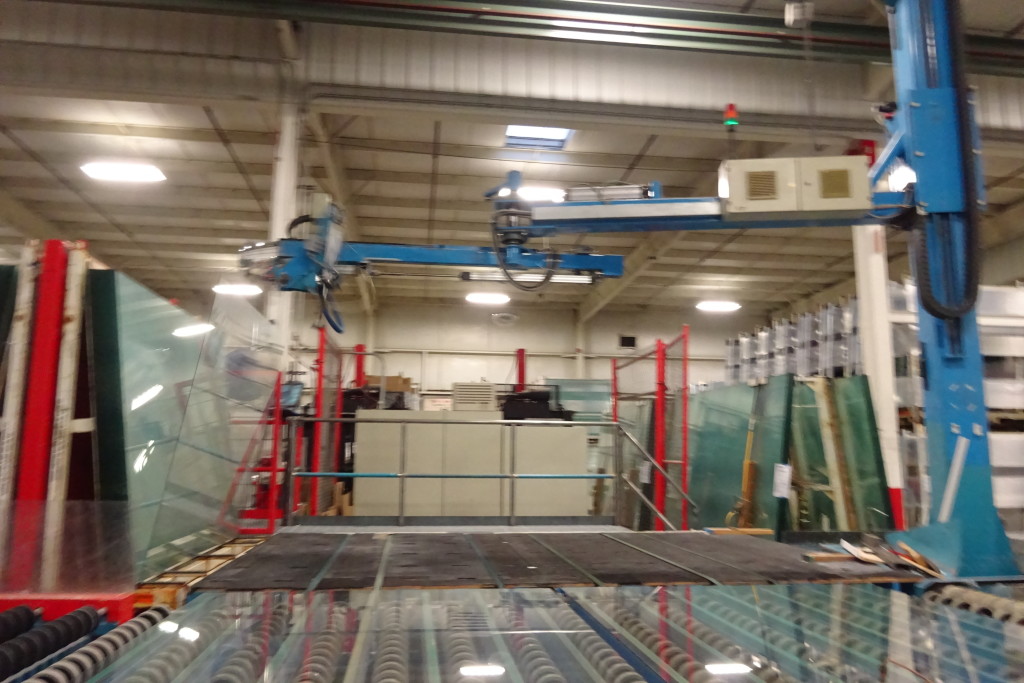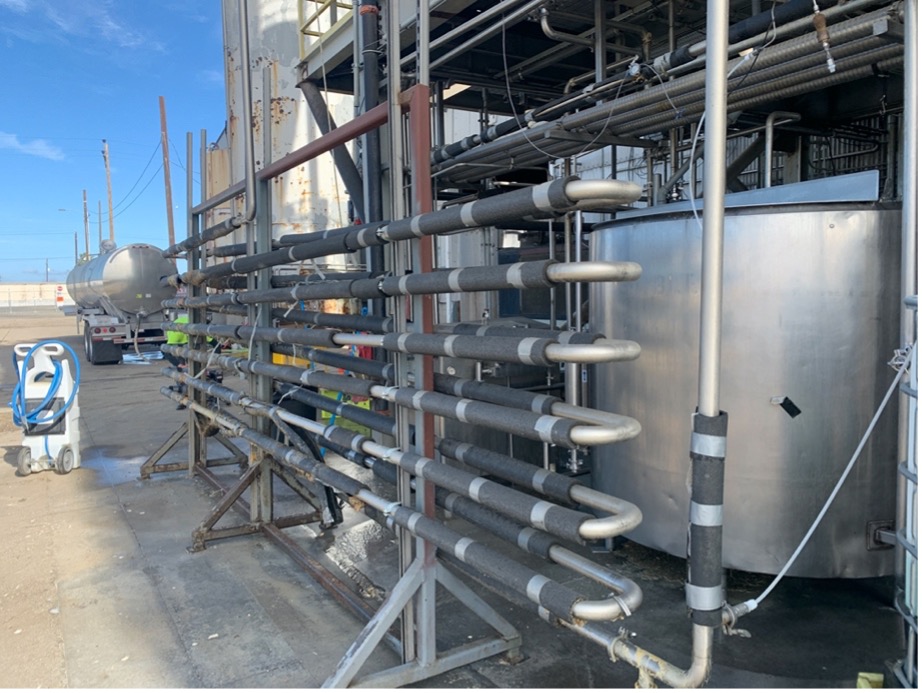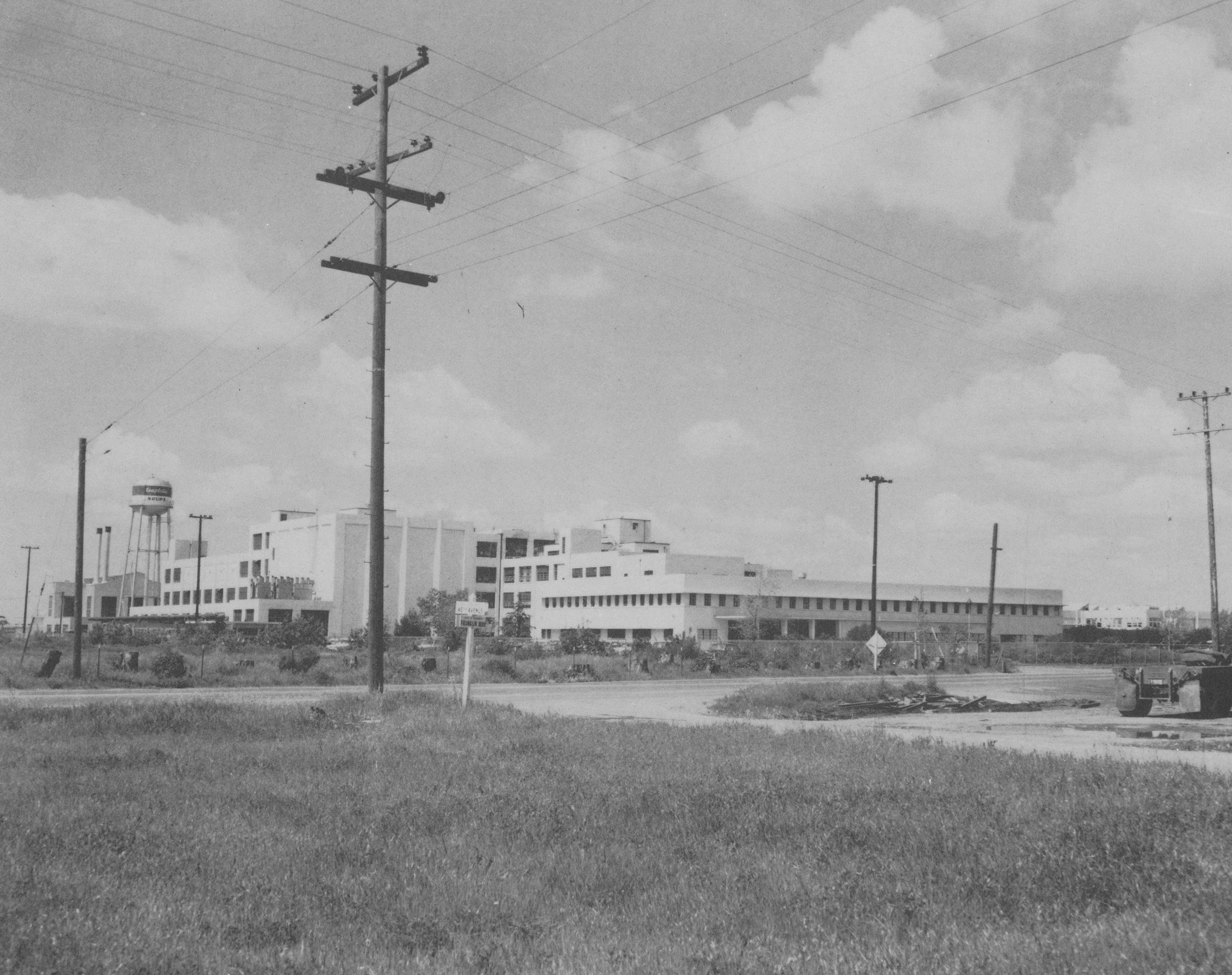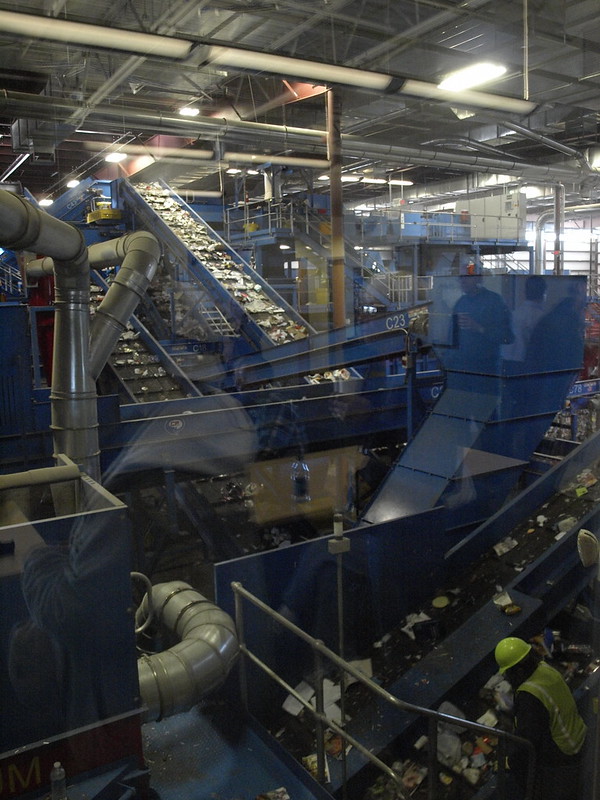 Recently we had the pleasure of inspecting and appraising a glass tempering and coating plant. Residential window glass production slowed considerably from 2008 to 2014 due to the devastating effects of the Great Recession on the home building market and construction in general. During that period of time a number of firms in the industry went out of business. Now that the economy has turned around, remaining glass fabrication firms are doing their best to satisfy marketplace demand. Who knew there were so many different kinds of glass? The equipment used to produce such products is more fascinating to me, of course, than the products themselves. Any equipment appraiser, I think, would be delighted to take an on-site glass fabrication equipment tour. (Please note that the supplier of this video was not our client.)
Recently we had the pleasure of inspecting and appraising a glass tempering and coating plant. Residential window glass production slowed considerably from 2008 to 2014 due to the devastating effects of the Great Recession on the home building market and construction in general. During that period of time a number of firms in the industry went out of business. Now that the economy has turned around, remaining glass fabrication firms are doing their best to satisfy marketplace demand. Who knew there were so many different kinds of glass? The equipment used to produce such products is more fascinating to me, of course, than the products themselves. Any equipment appraiser, I think, would be delighted to take an on-site glass fabrication equipment tour. (Please note that the supplier of this video was not our client.)
One of the more interesting aspects of appraising glass fabrication equipment is that we were unable to use the standard Sales Comparison approach methodology for the vast majority of the production equipment: either because of significant installation costs associated with most of the items or, in other cases, because there was so much of the equipment that was best considered “consumable.” These “consumables” were particularly evident in the coating line process, which includes both long-life equipment and shorter lived component parts. These component parts — i.e., magnet bars that “sputter” the coating onto the target, end blocks which hold the magnet bars, and turbo pumps which create a vacuum in the chamber — make up approximately 35% of the cost of a new coating line and are typically consumed by the process much more quickly than the major components of the coating machines — the chamber, the lids and the power supplies — which make up approximately 65% of the cost of a new coater. Following standard equipment appraisal practice, we used a weighted average life analysis to assign a Normal Useful Life in order to calculate a value.
Instead of taking you step-by-step through the valuation process used to arrive at a final opinion of value, however, let’s take a quick look at some aspects of modern glass fabrication.
Float Glass Production
Float glass is a fairly recent innovation in the history of glass production, with full scale profitable sales first achieved in the early 1960s, nearly a decade after Sir Alastair Pilkington began his experiments. This glass is made, as its name indicates, by floating liquid glass on a bath of molten tin. The tin on one side of the floating glass and gravity on the other produces a sheet of glass with even thickness and perfectly smooth surfaces on both side, eliminating the need for polishing. Starting from a temperature of 1100 °C, the glass cools to approximately 600°C, at which time the sheet is pulled off the bath by rollers at a controlled speed. Rollers positioned above the molten tin may be used to control both the thickness and width of the glass ribbon as it comes off the bath.
Once off the bath, the glass sheet passes through a lehr kiln for approximately 100 m, where it is cooled gradually so that it anneals without strain and does not crack from the temperature change. On exiting the “cold end” of the kiln, the glass is cut by machines. In the process, a continuous ribbon of glass moves out of the melting furnace and floats along the surface of a bath of molten tin. The ribbon is held at a high enough temperature over a long enough time for the irregularities to melt and for the surfaces to become flat and parallel: because the surface of the molten tin is flat, the glass also becomes flat. The ribbon is then cooled down while still on the molten tin, until the surfaces are hard enough for it to be taken out of the bath without rollers marking the bottom surface: so a glass of uniform thickness and with bright, fire-polished surfaces is produced without the need for grinding and polishing.
Glass Coating
Coating, commonly known as “sputtered coatings” or “sputtering,” uses a physical vapor deposition method of applying a film of particles from a “target” to the surface of an object through a process of strong electric and magnetic fields.
The first sputtered glass product (for automotive sunroofs) went into mass production in 1975. The first sputter-coated architectural glass was made in 1977. In 1989, a significant advance in the development of cylindrical rotatable magnetron cathodes introduced not only longer production runs but also improved sputtering performance, allowing thinner and thinner layers and the use of materials that had previously been considered too difficult to sputter.
The coating line we inspected was comprised of inter-related conveyer systems and specialized glass-handling equipment that moves uncoated glass sheets through a
washer and clean room, then vacuum and coating chambers, optical quality scanning equipment and ultimately lifts and packs the coated sheets onto custom-designed frames for shipping. The sputter coating process begins with uncoated float glass sheets delivered from another plant:
- Stacked uncoated glass transfers from custom racks to the coater conveyer system via the A-rack Loading Equipment
- Glass sheets move through a washer to clean glass via high-intensity scrubbing, rinsing and forced air drying
- Clean room eliminates contaminants on glass surfaces
- Sheets enter the ACC II-US accumulator, which allows regulation of transfer into the vacuum chambers
- As glass sheets move through the series of vacuum chambers, pumps sequentially reduce atmospheric pressure, creating a vacuum environment in which the glass can be charged with an inert gas
- Charged glass sheets move into coating chambers where microscopically-thin layers of metal oxides, mostly silver, are deposited onto the glass surface — the actual sputter coating process in which electrically-charged ions collide with cylindrical magnetrons, releasing atoms of metal oxides that fuse to the glass surface
- Conveyers carry the coated glass from the coating chambers to the optical inspection scanners that ensure quality, optimal color properties
and product specifications - Coated glass sheets are lifted off the conveyers and packed onto frames for shipping or moving to the tempering line.
Glass Tempering
Before entering the tempering line, glass is cut to its final size and inspected for any cracks or bubbles that could cause the glass to break during the tempering process. Sharp edges are rounded off and a slight margin of coating is ground off in a process called edge deletion. The cut and ground glass sheets are then thoroughly washed before moving through the furnace line via an extensive set of conveyers.
Tempering glass involves heating float glass to 760° C in a tempering oven, then quenching it with air jets to expedite cooling. This results in uneven cooling; the outer surfaces of the glass cool and contract faster than the center, giving the tempered glass its strength. Properly tempered glass is required to withstand pressures of at least 10,000 pounds per square inch (68,948 kilopascals) before it breaks, but usually it can withstand pressures of at least 24,000 psi (165,475 kilopascals). When broken, tempered glass breaks into small, usually rounded pieces. Cooled glass is powdered, lifted off the conveyers and packed onto frames for shipping.
Tempering lines, of course, include testing equipment that breaks the glass, measures and weighs the broken bits to ensure they conform to safety standards.
Glass Cutting
In fully automated glass cutting lines, robot de-stackers or cranes move large sheets of float glass from specialized racks into position to be scored with a cutting wheel before being moved to the breaking table for separation. And, of course, after being cut, the glass sheets are washed again to remove any dust. The CNC cutting program includes automatic speed and pressure adjustment to accommodate both straight and shaped glass cutting as well as different thicknesses of glass. Cutting lines can also include etching.
There are, of course, any number of processes that flat glass can be subject too, including insulating, silk-screening, back-painting, dynamic glazing, digital printing, heat soaking and fritting, fixed or adaptive.
I’m still not a glass fabrication expert, but I know more than I did and I hope you do, too.
Jack Young, ASA—MTS/ARM, CPA
NorCal Valuation Inc.




